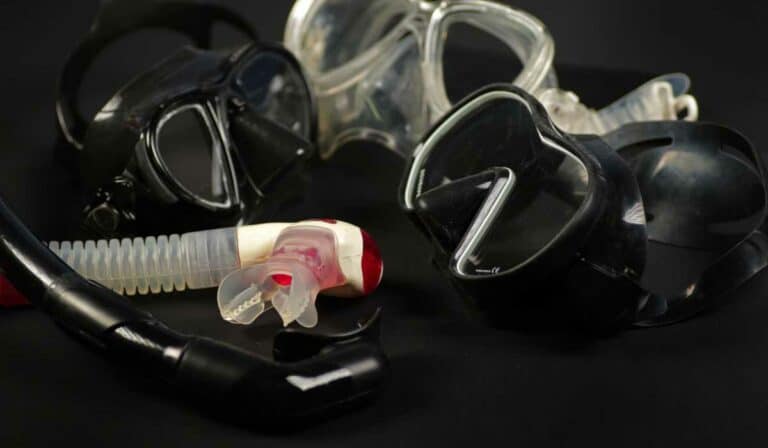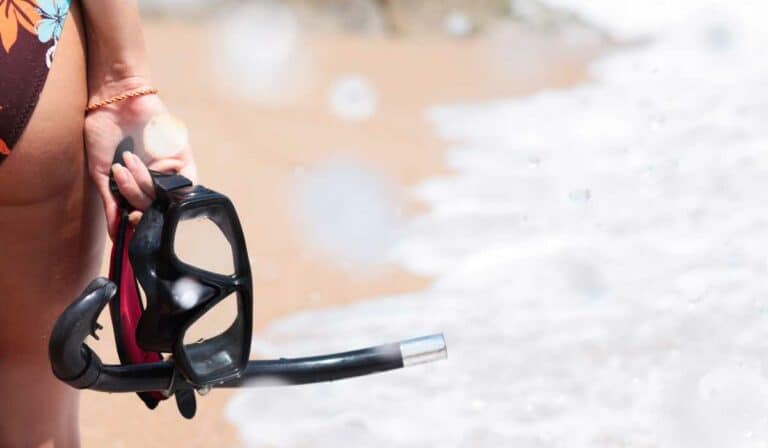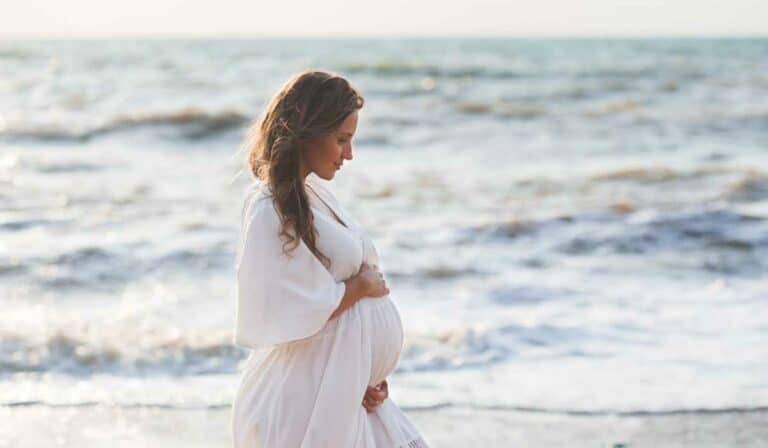Is Scuba Diving Dangerous? Exploring Risks and Safety Tips
Is scuba diving dangerous? This is an inquiry that commonly comes up among those who wish to experience the underwater realm. While it’s true that scuba diving carries certain risks, with proper training and adherence to safety guidelines, it can be an incredibly safe and rewarding adventure sport.
In this blog post, we will delve into the potential dangers associated with scuba diving by first understanding the risks involved. We will then discuss common causes of scuba diving accidents such as diver error, rapid ascents, and medical emergencies like decompression sickness or gas embolism.
Furthermore, we’ll provide you with essential safety tips for divers and share statistics on scuba diving accidents worldwide to give you a better understanding of its relative danger compared to other activities. In conclusion, we’ll offer guidance on how to properly prepare for a secure dive so you can relish this extraordinary experience while reducing any potential hazards.
So let’s dive in deeper – is scuba diving dangerous? By the end of this article, you’ll have all the information necessary to make an informed decision about your next underwater adventure.
Table of Contents
1. Understanding the Risks of Scuba Diving

Scuba diving is an exhilarating and unique way to explore the underwater world, but it’s essential to be aware of the potential dangers associated with this activity. By understanding these risks and taking steps to minimize them, you can enjoy a safe and memorable dive experience.
Potential Hazards in Scuba Diving
- Decompression sickness: Also known as “the bends,” decompression sickness occurs when nitrogen bubbles form in your body tissues due to rapid changes in pressure during ascent. This condition can cause joint pain, dizziness, paralysis, or even death if not treated promptly. To avoid decompression sickness, follow proper ascent procedures and use a dive computer or tables for guidance on your depth limits.
- Drowning: Although rare among trained divers, drowning remains one of the leading causes of scuba diving fatalities worldwide. Proper training in buoyancy control techniques can help prevent accidents related to drowning.
- Air embolism: An air embolism occurs when air bubbles enter your bloodstream through damaged lung tissue caused by holding your breath while ascending from a dive. Holding your breath while ascending from a dive can lead to air embolism, which causes similar symptoms to decompression sickness and may include chest pain and difficulty breathing. Always remember never to hold your breath while scuba diving.
- Hypothermia: Prolonged exposure to cold water temperatures can lead to hypothermia – a dangerous drop in core body temperature that impairs physical function and cognitive ability. Wearing appropriate exposure protection such as wetsuits or drysuits can help keep you warm and safe during your dive.
- Marine life encounters: While most marine creatures are harmless, some can pose a threat to divers if they feel threatened or provoked. It’s essential to maintain a respectful distance from all wildlife and avoid touching or disturbing them in any way.
In addition to these specific hazards, scuba diving also carries inherent risks associated with equipment malfunction, human error, and environmental factors such as currents and visibility. Proper training, regular equipment maintenance checks, and adherence to safety guidelines can significantly reduce the likelihood of accidents while diving.
By acquiring appropriate instruction, comprehending safety regulations, and being aware of the frequent triggers of scuba diving mishaps, you can minimize your danger while discovering the submerged realm. Next, we will discuss some common causes of scuba diving accidents to help further educate divers on how to stay safe in this exciting sport.
Key Takeaway:
Scuba diving can be a thrilling adventure, but it carries risks like decompression illness, asphyxiation, air bubble blockage in the bloodstream, cold shock, and interactions with sea creatures. Proper training and adherence to safety guidelines can minimize these risks and ensure a safe dive experience.
Click here to read about Discover the Best Scuba Diving Fins
2. Common Causes of Scuba Diving Accidents
Scuba diving accidents can occur for various reasons, but some causes are more common than others. By understanding these frequent issues and taking the necessary precautions, divers can significantly reduce their risk of encountering problems underwater.
a) Equipment Failure
Equipment failure is one of the leading causes of scuba diving accidents. This may include malfunctioning regulators, buoyancy compensator device (BCD) leaks or failures, and faulty dive computers. To minimize the risk of equipment failure, regular maintenance and servicing by a qualified technician is highly recommended.
b) Rapid Ascent & Decompression Sickness
Rapid ascent from depth without proper decompression stops can lead to decompression sickness (DCS), also known as “the bends.” DCS occurs when nitrogen bubbles form in the body’s tissues due to changes in pressure during ascent. Symptoms range from joint pain and dizziness to paralysis or even death if not treated promptly with recompression therapy. Always follow recommended ascent rates and perform safety stops at appropriate depths.
c) Running Out Of Air
A diver running out of air is another common cause behind scuba diving accidents that could be easily avoided by monitoring your air supply closely throughout the dive using a submersible pressure gauge (SPG). Plan your dives carefully according to your consumption rate and always ascend with enough reserve air remaining.
- TIP: A good rule of thumb is to begin your ascent when you have reached one-third of your initial air supply.
d) Diver Error and Poor Training
Lack of proper training or poor decision-making can lead to accidents while scuba diving. Ensure that you receive thorough instruction from a certified dive instructor before attempting any dives, and continue to develop your skills through ongoing education and practice. Always dive within the limits of your experience, certification level, and current conditions.
e) Environmental Hazards
Natural hazards such as strong currents, low visibility, cold water temperatures, or encounters with marine life can pose risks for divers. Researching local conditions at your chosen dive site beforehand will help prepare you for potential challenges underwater. Additionally, using appropriate gear like wetsuits or drysuits for thermal protection in colder waters is crucial.
In summary, understanding these common causes behind scuba diving accidents allows divers to take preventive measures to ensure safer underwater experiences.
Therefore, to prevent scuba diving mishaps, it is essential for divers to recognize the primary sources of risk and take appropriate measures. Divers should be cognizant of strategies to guarantee secure dives, including ways to avert potential risks while submerged.
Key Takeaway:
Scuba diving accidents can occur due to equipment failure, rapid ascent, and decompression sickness, running out of air, diver error and poor training, and environmental hazards. To minimize the risks associated with scuba diving accidents, divers should maintain their equipment regularly, monitor their air supply closely throughout the dive using a submersible pressure gauge (SPG), follow recommended ascent rates, and perform safety stops at appropriate depths while ensuring that they receive thorough instruction from a certified dive instructor before attempting any dives.
Click here to read about Best Watches for Scuba Diving: Time to Dive In
3. Safety Tips for Scuba Divers

To ensure a safe and memorable scuba diving experience, safety should be the top priority. Here are some crucial safety tips that every scuba diver should follow:
A. Choose a Reputable Dive Operator
Your dive operator plays a significant role in ensuring your safety during your dive trip. Be sure to research and select a reputable PADI-certified dive center with experienced instructors who adhere to industry-standard practices.
B. Get Proper Training and Certification
Before taking the plunge into scuba diving, ensure you are properly trained and certified by experienced professionals. Enroll in courses such as Open Water Diver certification programs, which will teach you the necessary skills and knowledge needed for safe diving.
C. Know Your Limits
- Dive within your skill level: Avoid attempting advanced or challenging dives if you don’t have the appropriate experience or certifications.
- Maintain good physical fitness: Ensure that you are physically fit enough for diving by engaging in regular exercise, eating healthily, and staying hydrated.
- Avoid alcohol consumption before diving: Alcohol impairs judgment, coordination, and reaction time – all of which are vital when scuba diving.
D. Follow Safe Diving Practices
- Buddy system: Always dive with a buddy and establish clear communication signals before entering the water.
- Check your gear: Inspect all of your equipment, including regulators, buoyancy compensator devices (BCDs), tanks, and wetsuits to ensure they are in good working condition.
- Plan your dive: Create a detailed plan for each dive that includes depth limits, bottom time restrictions, decompression stops if necessary, and emergency procedures. Make sure everyone in the group understands this plan.
E. Monitor Your Air Supply
Maintaining awareness of your air supply is crucial while diving. Regularly check your gauge throughout the dive to avoid running out of air unexpectedly. It’s also essential to know how much air you need for ascent and reserve enough for emergencies or unexpected situations.
F. Be Aware of Your Surroundings
Stay vigilant about potential hazards such as strong currents or underwater obstacles like rocks or coral formations during dives. Additionally, be mindful of marine life encounters – some creatures may pose risks if approached too closely or provoked unintentionally.
Taking these safety tips into account will help minimize the potential dangers associated with scuba diving and allow you to fully enjoy exploring our planet’s incredible underwater realms.
To guarantee a secure and gratifying dive, this article outlines some safety tips which scuba divers should observe. However, it is important to understand the potential risks associated with any activity involving water or extreme depths; therefore, we will now take a look at statistics on scuba diving accidents worldwide.
Key Takeaway:
To ensure safe scuba diving, it is important to choose a reputable dive operator, get proper training and certification, know your limits, and follow safe diving practices such as using the buddy system and monitoring air supply. It’s also crucial to be aware of potential hazards in the surroundings like strong currents or marine life encounters.
4. Statistics on Scuba Diving Accidents Worldwide
Examining the latest statistics on scuba diving accidents around the world can provide valuable insights for divers everywhere, helping them understand and mitigate potential risks. While scuba diving is generally considered a safe adventure sport, accidents do happen, and being aware of these numbers can help you take necessary precautions.
A. Global Accident Rates
According to Divers Alert Network (DAN), there are approximately 1-3 deaths per 100,000 dives worldwide each year. This number may seem low; however, it’s essential to remember that even one fatality is too many when proper safety measures could have prevented it.
B. Contributing Factors in Fatalities
- Drowning: The leading cause of death among scuba divers is drowning due to various factors such as panic or equipment failure (source). Proper training and maintaining your gear can significantly reduce this risk.
- Air embolism: An air embolism occurs when an air bubble enters the bloodstream through a tear in lung tissue caused by rapid ascent or holding breath while ascending (source). Following appropriate ascent rates and practicing proper breathing techniques during ascents can prevent this dangerous condition.
- Nitrogen narcosis: Nitrogen narcosis happens when nitrogen gas dissolves into body tissues at depth, causing impaired judgment similar to alcohol intoxication (source). Limiting dive depths and using appropriate gas mixtures can help avoid this issue.
- Decompression sickness: Decompression sickness (DCS) is caused by nitrogen bubbles forming in the body during ascent from a deep dive (source). Proper decompression stops, following safe diving profiles, and using dive computers can minimize the risk of DCS.
Click here to read about Best Spots for Scuba Diving in the Caribbean
C. Non-Fatal Injuries
In addition to fatalities, scuba divers also face risks of non-fatal injuries such as barotrauma, ear infections, or marine life encounters. According to DAN’s annual report on diving incidents and accidents (source), 41% of reported cases involved some form of barotrauma – injury resulting from changes in pressure affecting air-filled spaces within the body like ears or sinuses.
The statistics mentioned above emphasize that while scuba diving is generally safe when practiced responsibly, it’s crucial for divers to stay informed about potential dangers and take necessary precautions to reduce their risk of scuba diving risks or injuries underwater. Proper training and following safe diving profiles can help make scuba diving safe and enjoyable for everyone.
Scuba diving can be perilous if safety guidelines are not observed, which is why it’s essential to comprehend the global data on scuba diving mishaps. With that in mind, let’s look at how you can prepare for a safe dive and minimize your risk of an accident.
Key Takeaway:
Scuba diving is generally considered safe, but accidents can happen. DAN reports that, on average, there are 1-3 fatalities per 100K dives globally annually caused by drowning, air entrapment, nitrogen intoxication, and decompression disorder. Proper training and following safe diving profiles can help make scuba diving a safer experience for everyone.
Is Scuba Diving Dangerous?

Diving into the underwater world can be an exhilarating experience, but it’s natural to wonder about the potential dangers associated with scuba diving. While there are risks involved, scuba diving can be a safe and enjoyable activity when proper precautions are taken.
Understanding Scuba Diving Risks
Scuba diving involves breathing compressed air underwater, which can lead to potential dangers such as decompression sickness, gas embolism, and rapid ascents. However, the majority of scuba diving deaths are caused by diver error rather than equipment failure or other factors.
The Divers Alert Network reports that the overall incidence of diving fatalities is relatively low, with an estimated 2-3 deaths per 100,000 dives. This is comparable to the risk of dying from a heart attack while running a marathon.
Click here to read about Best Spots for Scuba Diving in California
Reducing Scuba Diving Risks
While scuba diving does involve some inherent risks, there are steps you can take to minimize those risks and ensure a safe and enjoyable dive:
- Get Proper Training: Enroll in a certified scuba diving course to learn essential skills and safety procedures. As you progress, consider taking advanced courses or specialty certifications that focus on specific aspects of diving, such as deep diving, wreck diving, or night diving.
- Check Your Equipment: Before diving, inspect all scuba equipment to guarantee it is in proper condition and functioning correctly. This includes checking for any leaks or damage to your regulator, BCD (buoyancy control device), tank, mask, fins, and wetsuit.
- Plan Your Dive: It’s crucial to plan every aspect of your dive beforehand – from entry and exit points to maximum depth and bottom time limits – so that you know what to expect during the dive itself. Familiarize yourself with local conditions such as currents or visibility issues by consulting tide charts or talking with experienced divers who have dived at the site before.
- Know Your Limits: It’s important to recognize your personal limits when it comes to depth, air consumption, and physical fitness. Never push yourself beyond what you’re comfortable with – doing so can lead to panic situations or accidents underwater.
- Stay Healthy and Hydrated: Maintaining good health is crucial for safe scuba diving experiences; this includes staying well-rested before dives and avoiding alcohol consumption within 24 hours prior to dive time. Additionally, remember to always stay hydrated by drinking plenty of water throughout the day leading up to your planned excursion into the depths below the surface.
By following these steps in preparing for your dive, you’ll be well-equipped to enjoy the wonders of the underwater world while minimizing the risks associated with scuba diving adventures.
Key Takeaway:
Scuba diving can be a secure and delightful experience if the necessary safety measures are taken. The majority of scuba diving deaths are caused by diver error rather than equipment failure or other factors. To minimize risks, get proper training, check your equipment, plan your dive, know your limits, and stay healthy and hydrated.
FAQs about to Is Scuba Diving Dangerous?
Is Scuba Diving Dangerous?
Scuba diving is an adventure sport that allows individuals to explore the underwater world and breathe underwater. However, like any adventure sport, there are potential dangers associated with scuba diving. In this article, we will explore some of the risks and safety measures associated with scuba diving.
Scuba Diving Risks
Scuba diving is generally considered a safe activity when proper training and precautions are taken. However, there are risks associated with scuba diving that can lead to serious injury or death. Some of the potential dangers of scuba diving include:
- Decompression sickness
- Gas embolism
- Rapid ascents
- Diver error
- Heart attack
It is important to note that scuba diving fatalities are relatively rare. According to the Divers Alert Network, there were only about 0.164 fatalities per every 100,000 dives worldwide between 2010 and 2023.
Scuba Diving Safe Practices
While scuba diving does come with risks, there are safety measures that can be taken to minimize those risks. Some of the ways to stay safe while scuba diving includes:
- Get proper training and certification before diving
- Always dive with a buddy
- Check equipment before diving
- Plan dives and sticks to the plan
- Monitor depth and time underwater
By following these safe practices, scuba diving can be a safe and enjoyable activity for individuals of all skill levels.
Conclusion
By adhering to safety protocols, scuba diving can be an enjoyable and relatively safe activity. Understanding the potential risks, and common causes of accidents, and following safety tips can greatly reduce the chances of injury or fatality while diving. Although there are risks associated with scuba diving, taking the right safety measures and undergoing appropriate training can make it an incredible adventure.







